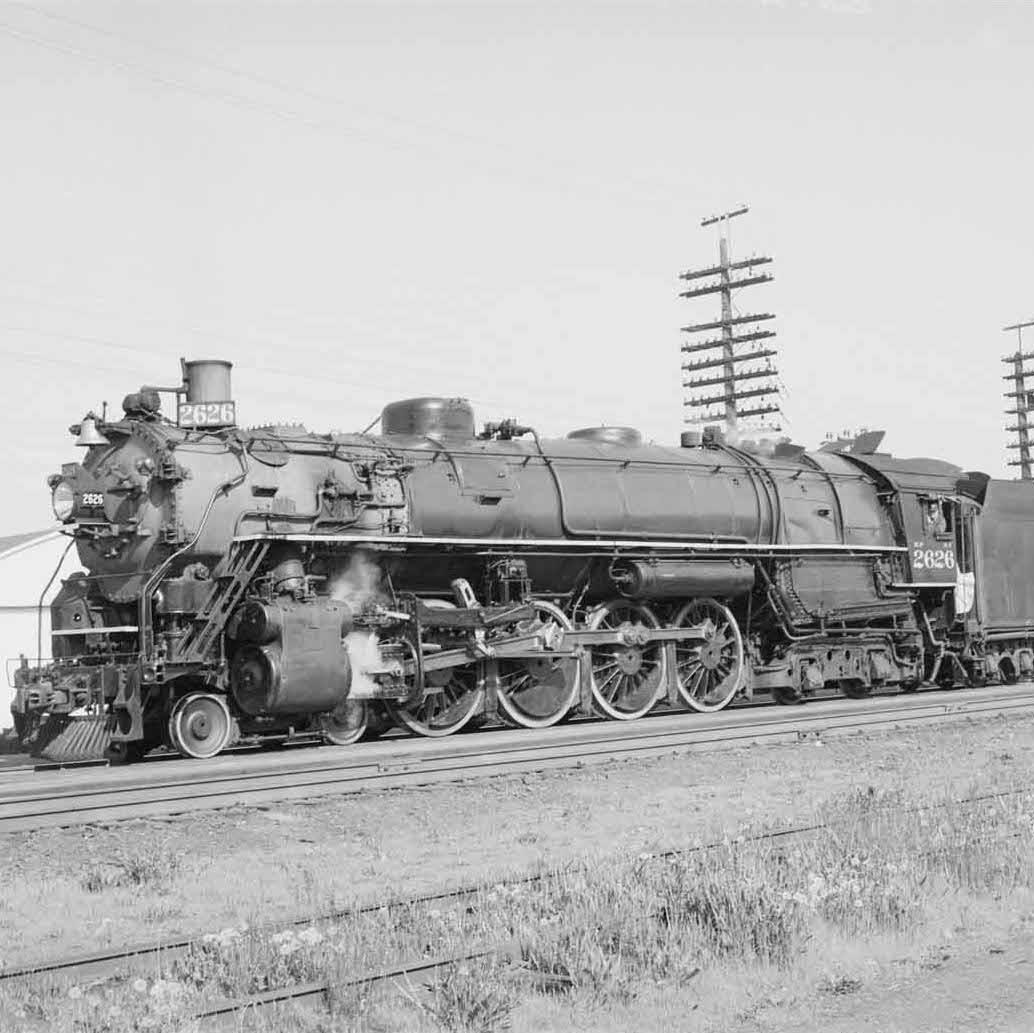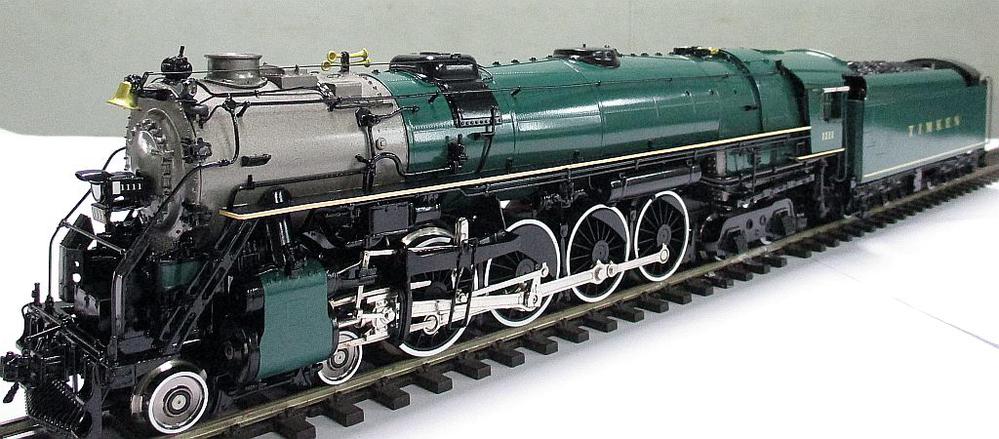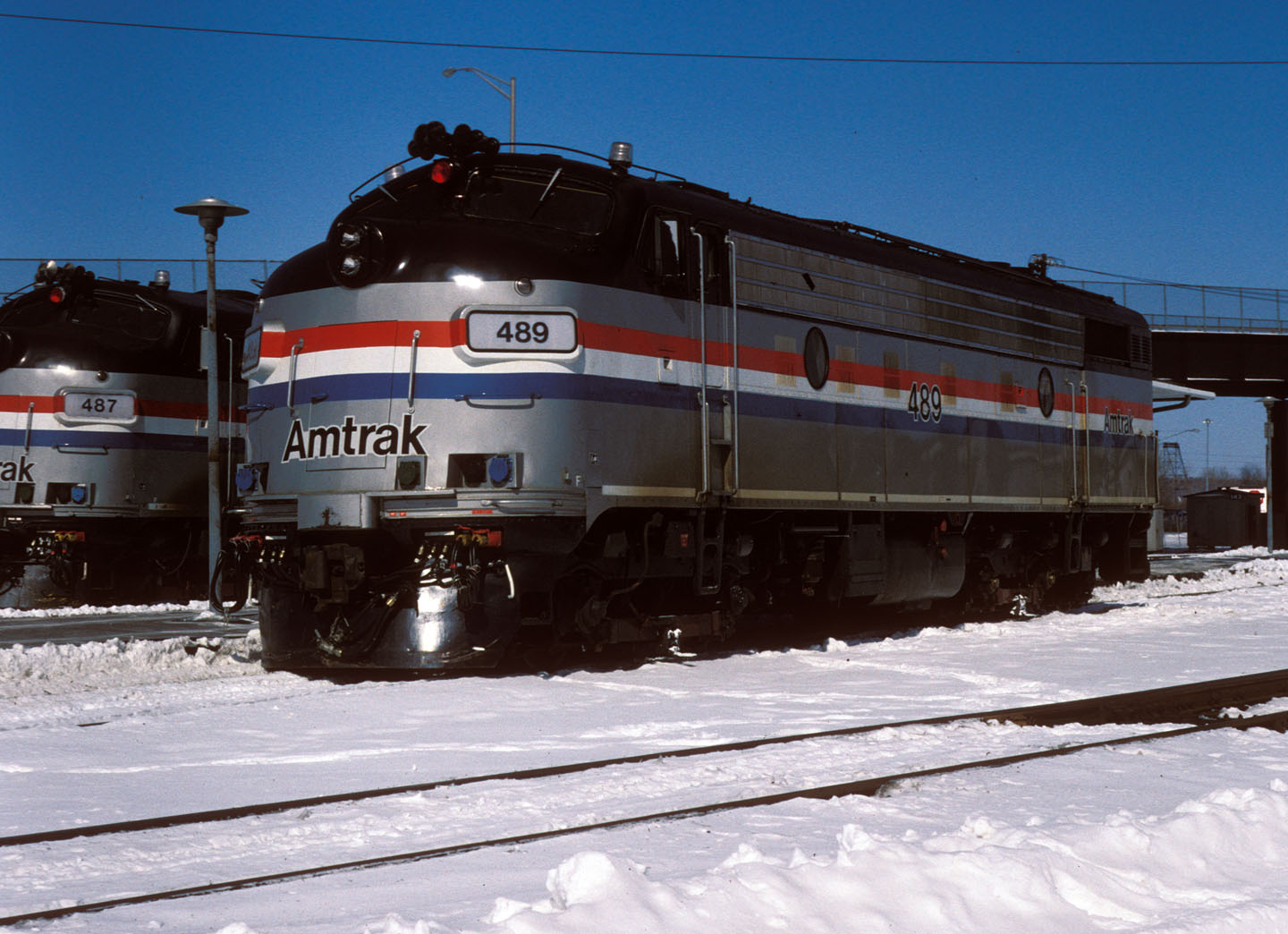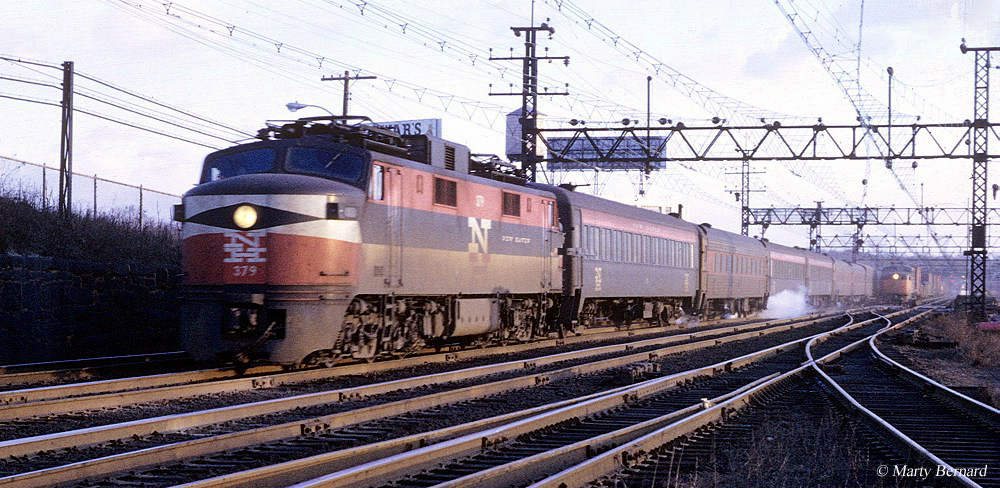
ddavidv
PowerDork
3/3/20 10:19 a.m.
NickD said:
In reply to ShawnG :
I think it is cabooses. PRR avoided that whole controversy by calling them a cab car/cab cars.
Close. 'Cabin' cars.
The Caboose Motel outside of Strasburg changed owners a year or two ago. I live near there so read about the ownership change in the local paper. It was getting shabby but I think I've read the new owners have been fixing things up. I did have a friend stay there once in the winter and he advised against doing it that time of year. They are steel cars with retrofitted heating systems and (probably) minimal insulation. They are progressively replacing the windows with house style units.

Reviews online are mostly positive though there are still some complaints of condition issues. These things are maintenance headaches and were never intended to be comfy accomodations.

NickD
PowerDork
3/3/20 3:33 p.m.
ddavidv said:
NickD said:
In reply to ShawnG :
I think it is cabooses. PRR avoided that whole controversy by calling them a cab car/cab cars.
Close. 'Cabin' cars.
Yep, correct. Cab cars are a thing, just not the thing I was thinking of. LIRR had some old Alco FAs that they converted to cab cars and used until recently. Some of them got saved, thankfully.

NickD
PowerDork
3/3/20 3:49 p.m.
ddavidv said:
These things are maintenance headaches and were never intended to be comfy accomodations.
You want to talk about cars that were a maintenance headache, look at any of the Budd/Pullman/ACF fluted stainless-steel passenger cars. The stainless-steel skin gets a water leak, water lays inside on the carbon steel structure, plus electrolytic corrosion. And with that stainless skin, you never know there is an issue until all of a suddent the car starts bowing in the middle, or a huge chunk of the skin falls off or the end steps tear off.
AT&SF #2865, which was cut up last year, was a textbook case of Budd Disease.



The car looked okay, aside from smashed windows, and then once the stainless skin started to fall off of its own accord it became obvious the car was a goner.
New Haven had a similar issue with their 4400-series "washboard" MU cars. They parked them because traffic was declining and the 4400s, despite being newer, were never well liked because they rode very rough. So the New Haven parked them and used their older 1st-generation MUs and let them sit for a few years. Then they decided to convert them to AC and run them elsewhere and dug into them and discovered that in the couple years they had sat, the carbon steel structure had rotted out and they were all junk. Too bad, because they looked cool.


ShawnG
UltimaDork
3/3/20 3:58 p.m.
Is that the same Budd that produced automotive bodies?
We had a Ruxton in the shop, Budd built the Ruxton bodies for Moon Motorcar Company and the two that I've put my hands on were very well built bodies. All steel, no wood reinforcement. Very advanced for 1929.

NickD said:
Timken #1111, aka "The Four Aces". In 1930, the Timken Roller Bearing Company (yes, that Timken) commisioned American Locomotive Works to build a single 4-8-4 Northern, numbered #1111, to serve as a demonstrator for the superiority of roller bearings over traditional friction bearings. Fifty two other parts manufacturers also donated parts on account to the unique engine. After being built, the Four Aces went on tour to 13 major railroads, impressing all of them in usage in both passenger and freight usage.

In 1957, the Northern Pacific was dieselizing and the writing was on the wall for the #2626/#1111. Efforts began to be made to preserve the unique locomotive, with Timken looking at purchasing it and moving it back to their headquarters under its own power to display it in it's original appearance. Unfortunately, in an era before cell phones and e-mails, communication both inside and outside the company was slow, and by the time Timken and Northern Pacific began working out a deal, the locomotive was scrapped.
One of my first model train engines was #2626. I had no idea of the backstory.
NickD said:
Timken #1111, aka "The Four Aces". In 1930, the Timken Roller Bearing Company (yes, that Timken) commisioned American Locomotive Works to build a single 4-8-4 Northern, numbered #1111, to serve as a demonstrator for the superiority of roller bearings over traditional friction bearings. Fifty two other parts manufacturers also donated parts on account to the unique engine. After being built, the Four Aces went on tour to 13 major railroads, impressing all of them in usage in both passenger and freight usage.

It's also worth noting that while no color photos of the #1111 exist, the locomotive was not black, but instead had a dark green boiler jacketing, cab and tender, white detailing on the wheels and polished rods, making it a very attractive engine.

This engine. This would be ideal to 'build new' if for nothing else than a static display.
Maybe on a section of track long enough to show the superior Timken bearing design so groups of 3 could pull the engine back and forth?

NickD
PowerDork
3/3/20 4:50 p.m.
ShawnG said:
Is that the same Budd that produced automotive bodies?
We had a Ruxton in the shop, Budd built the Ruxton bodies for Moon Motorcar Company and the two that I've put my hands on were very well built bodies. All steel, no wood reinforcement. Very advanced for 1929.
The very same Budd Company of Philadelphia. They also invented "shot-welding" to join stainless steel without compromising its properties. And made the cool (and dangerous) Budd split-rim wheels on old trucks. They had their hand in just about everything

NickD
PowerDork
3/4/20 7:35 a.m.

New Haven's handsome GE-built EP5 "Jet" electric locomotives. Although good looking, powerful, fast-accelerating, and capable of running on both overhead catenary and third-rail electric, they always suffered overheating troubles and electrical fires, made worse by the New Haven's poor financial condition and resulting poor maintenance. After the merger, Penn Central tried using them, but would find the Pennsylvania's GG1s much more reliable. The MTA banned them after one caught fire in the Park Avenue Tunnel, and all were eventually scrapped.

NickD
PowerDork
3/4/20 7:39 a.m.

A presumably dead EP5 in Penn Central black with the "mating worms" logo. Ten of them were built in '54 and by the time the New Haven went into bankruptcy in '62, only 3 were left in service. All 10 were rebuilt and returned to operation, but by New Haven's merger into Penn Central in '69, four of them were again out of service and were scrapped. After the MTA ban in '73, all of them went into storage, although Penn Central yanked 2 out of storage and stripped the third-rail electric gear, one of the two pantographs and the steam generator out and tried to use them in light freight service (lack of MU and dynamic brakes limited how much they could haul) redesignated as E40s. Within a year of Penn Central's inclusion into Conrail, they were scrapped.

NickD
PowerDork
3/4/20 10:10 a.m.
Before the EP-5 "Jets", the New Haven relied heavily on their EP-3 "Flat Bottom" box cab electrics from the thirties. There was an intermediary EP-4, but they didn't own many of them and they led comparatively short lives.

A lot going on here. To the left is an EP-5. In the foreground is an EP-3 in the new McGinnis colors and it appears to be leading an EP-4 or EF-3 (they looked very similar, minor cosmetic differences and an EP was a passenger unit and an EF was a freight unit)


NickD
PowerDork
3/4/20 12:08 p.m.

GE EF-4s were the last New Haven electric locomotives. During Patrick McGinnis's 22-month tenure as president of the New Haven, he was staunchly against electric operations and wanted to de-electrify most of the line except for in commuter areas. A financial study recommended that the railroad not drop $17M on new EMD FL9s, but to instead keep using the electric operation, basically saying "As long as the wires are up, its cheaper to keep using them." Instead, McGinnis decided to tear down a lot of catenary, put all their big freight and passenger electric motors out to pasture, except for the troublesome EP-5s, and replace a single electric locomotive with multiple diesels on each train. By the time of its '63 bankruptcy, the trustees realized that McGinnis really had had no clue what he was doing. So the NH purchased a bunch of very cheap ex-Virginian Railway GE EF-Cs that they had retired after the Norfolk & Western merger and tore down their catenary, then restrung all the wires that they had pulled down and began operating electric freight between Cedar Hill and Bay Ridge again.

NickD
PowerDork
3/5/20 9:49 a.m.
The New Haven's FL9s were an interesting concept. Based off an EMD FP9, which was itself a stretched F9 with a steam generator for passenger usage, the FL9 (L stood for Lengthened) had an even larger steam generator tank. It used an A1A truck under the back to support the extra weigh, giving it the same B-A1A layout as a Fairbanks-Morse passenger C-Liner. But even more importantly, it mounted third-rail electric shoes on the trucks, allowing it to operate in electrified areas with the diesel engine off. In some areas this was an advantage just in terms of fuel savings. But in New York City or other large cities, it allowed the trains to continue in behind the same locomotive, instead of having to stop couple on an electric unit and then continue on. Instead, an FL9 could run the train all the way into the city, saving time and cutting down on equipment and crews.


NickD
UltimaDork
3/5/20 9:57 a.m.
The downside to the FL9 was that they had higher operating costs and lower performance than the electrics that they put out to pasture. With only 1800hp on tap, it took three FL9s to do the same job as a single EP-5. Still the New Haven retired all but their EP-3s and EF-4s and put their fleet of 60 FL9s to work. Still, the FL9 was not a failure. After the Penn Central merger, they took over trains in and out of New York City under a variety of owners, including Penn Central, Amtrak, MTA and Metro-North and were in operation until the late-'90s to early-2000s, depending on owners. They also laid the groundwork of the dual-power concept for the GE P40/P42 Genesis units that Amtrak would eventually purchase.


NickD
PowerDork
3/5/20 10:23 a.m.
While the FL9 was a disastrous decision by New Haven, they certainly did okay by their secondary owners. Amtrak had a number overhauled by Morrison-Knudsen in the late 1970s and ran theirs into 1996.

Metro North ran theirs into the 2000s.

And CDOT, running theirs in New Haven colors no less, kept theirs until 2009.

In reply to NickD :
The shot of the engine in Metro North colors was taken on the Hudson Line, specifically the north end of the Breakneck Ridge tunnel. I saw one of those FL9s pulling a three-car train into Wassaic (the northern terminus of the Harlem Line) within the last decade, and I think there's still one sitting in the yard at Croton-Harmon.

NickD
PowerDork
3/5/20 3:33 p.m.
In reply to 02Pilot :
The one in the yard might have been sold to a museum that's trying to work up funds to transport it, perhaps. I know a lot of them escaped the cutting torch. Its funny that an engine that was born of a poor decision, that never lived up to its potential with the original owner because of a second bad decision, went on to have a beloved 50 year career with secondhand owners.
Oh, and since you mentioned (in passing) the Amtrak Genesis engines, here's a few shots:


I have a shot of a BNSF engine from the other day. Stands out in the middle of nowhere Saskatchewan Canada, I'll need to upload it later.

NickD
PowerDork
3/6/20 6:26 a.m.
In reply to 02Pilot :
I am curious if the first Genesis built is still in service. And if any provisions have made for its preservation. Or any of the Genesis, for that matter, when Amtrak begins retiring them. I know railfans hate the Genesis, but they have been the backbone of Amtrak's workforce since 1992. Of course, judging by the FL9's history, it might not be until 2040 when they start retiring them.
In reply to NickD :
I don't hate them, but since they're pretty much all I see on passenger trains (Amtrak and Metro North), I'd prefer something with a bit more visual interest. I suspect once they start disappearing one or two will get set aside.
Come to think of it, for as many trains as run around here, the locomotives are of remarkably uniform types. CSX seems to run nothing but the big GE units, though every once in a while I'll see one in BNSF or NS livery.





















































